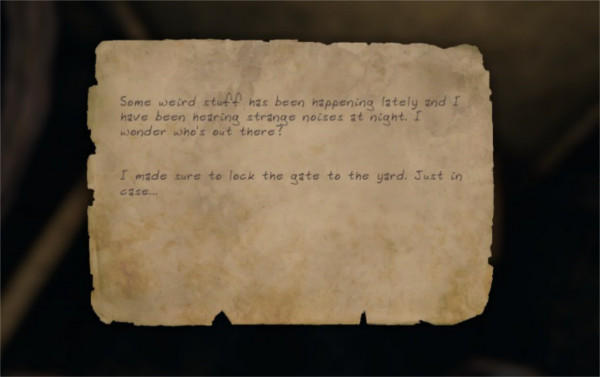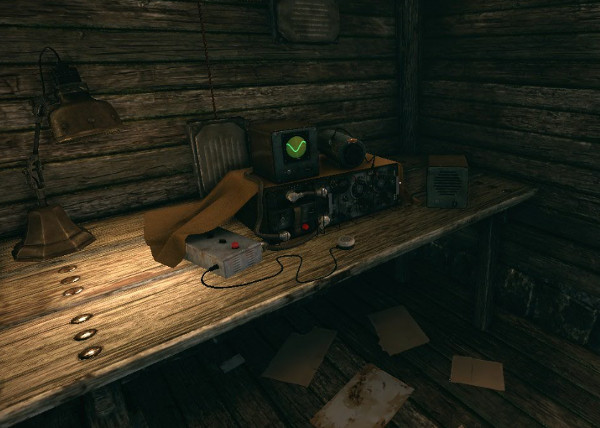
Lethe – Episode One Review
The game creates a sense of dread that’s maintained throughout the entire adventure, and the graphics are, in a word, stunning.







Genre: Action, Adventure
Release date: August 1, 2016
Lethe – Episode One is the first release from KoukouStudios – a small independent video game development company. The game’s been in the works for almost 4 years, driven by the talents and vision of John E. Koukourakis, John Faber and a handful of others.
The word ‘Lethe’ is taken from the Greek and means ‘oblivion’ or ‘forgetfulness.’ In terms of mythology Lethe is a river in Hades whose waters cause those who drink to forget their past. Within a few minutes of starting this game, the relevance of the title becomes obvious.
The story of Lethe: Episode One is provided through on-screen text, without narration or dialog. The opening scene reveals that you’re Robert Dawn, a man who has found documents among his late father’s effects that implies a significant gap in his personal history. He sets out on a voyage of discovery, with only a letter from a foreign post office as his guide. Gameplay begins as you wash up on a beach in parts unknown.
You set off to explore the remnants of a mining village with hopes of understanding your true origins. You soon enter the upper levels of a now-closed mining operation and descend into a saga of darkness and madness. Although brief snippets of Robert’s thoughts are provided at each chapter break, the full story is revealed through a series of letters and diary entries that you find along the way. Progress through the game doesn’t depend on finding and reading the story, but skipping it would greatly detract from the overall experience.

Lethe: Episode One is described as a “first person adventure game with survival horror elements.” This was of concern to me, as my action skills are not honed to perfection. Adventurers will be relieved to hear that there are no weapons and no combat. Your survival depends on your ability to navigate the landscape without being killed by a host of hazards which include acid lakes, chasms, bear traps, fire, steam, etc. Although the mines of Lethe are sparsely populated, the denizens are also lethal. Your only defense is to outwit them through stealth and cunning
Towards the midpoint of the game you develop telekinetic powers which allow you to interact with objects from a distance and move things such as crates, barrels, door levers, and power sources. Although telekinesis is great for removing obstacles or building paths to safety, it has no effect on NPCs.
Built with the Unreal Engine, Lethe: Episode One is simple but not easy. There are only a handful of keys assigned to walk, run, jump, crouch, and interact with an object. The mouse is used for turning and scanning and for exercising your telekinetic powers. Although I’m an old-school PC gamer, Lethe: Episode One has convinced me that perhaps it is time for me to transition to a controller instead of relying on the coordination of keyboard and mouse.
There are three statistics to monitor – Health, Stamina, and (Psychic) Energy. There is no inventory in the traditional sense but you are allowed to accumulate up to 5 Health Packs and 5 Energy Packs for use, as needed. Otherwise, you just consume items as you find them. The game environment provides more than adequate resources for managing your current state, if you’re willing to look carefully.
The primary challenge is finding your way through the mines and discovering the letters and notes that reveal the story. This requires opening locked doors, clearing blocked exits, turning off hazards, balancing on pipes and girders, and jumping to solid ground. You walk through rooms, crawl through air ducts, swim, and climb along the way. Creative problem-solving is often required to figure out where the exit point is in each area and how to get out alive. Solutions are not always obvious and some require a lot of activity on your part to locate the mechanisms to unlock doors or to create your own pathway.
At its core, Lethe: Episode One is a complex maze-like obstacle course with a minimal story and a number of mutated beings who do not appreciate your presence in their realm. Where the game truly excels, however, is in the atmosphere created and maintained by the graphics and sound track. The combination of the two create a completely immersive experience. The developers suggest that the game is “best played in a dark room with headphones” which is exactly the way to approach Lethe: Episode One.
The graphics are, in a word, stunning. The environment is very large and each scene is exquisitely crafted. It’s a dark game with intermittent lanterns that can be turned on to light certain hallways and rooms. At times, it is difficult to see which can be frustrating but lends credence to the idea that you’re in an underground world that’s been abandoned by humans. The soundtrack is a combination of original music by composer Jeremiah Pena and environmental noise that comes from all directions. You’re engulfed by the sounds of the mine around you and the occasional roar of a nearby creature. Water drips, machinery turns on and off, steam hisses, elevators whir, and your footsteps echo.
All-in-all, the game creates a sense of dread that’s maintained throughout the entire adventure. You actually encounter only a handful of creatures but you’re led to believe that they’re always close by and represent an imminent threat. As a result, I found my heart pounding as I entered new areas and I breathed a sigh of relief when I realized I was in a ‘safe’ space. In several cases, a sudden change in lighting or a loud sound made me jump in my seat. The landscape becomes more horrific as you travel deeper into the mines but for me, the entire game put me on the edge of my seat with a heightened level of adrenaline. The possibility of menace was much more frightening than when I met it face-to-face.
While some action-savvy gamers may play through Lethe: Episode One without a hitch, this wasn’t the case for me. I was killed more times than I can count which required restarting at the last save point and replaying complex scenarios over and over. While I rarely survived an initial encounter with a resident of the mines, my biggest problem was falling prey to environmental hazards. I plunged to my death; I fell into an acid lake; I stepped on countless traps; I drowned; and I was burned alive. Thus, my sense of wonder was tempered with a growing resentment at the lack of a ‘save on demand’ feature. Like many other games built with the Unreal Engine, save points occur intermittently. After completing a particularly difficult segment, I began to pray for an auto-save. More often than not, these prayers were not readily answered. The developers did provide a series of transmitter stations which can be used to save your game upon arrival. However, these are few and far between. To further complicate matters, in the latter part of the game, the transmitters cannot be used until an active power source is located and positioned in place.

Saving woes aside, Lethe: Episode One is an extremely well-put-together game. For those with good in-game coordination and who enjoy exploration and physical puzzles, it is definitely a title worth playing. For those who are not Lara Croft at heart, this game may result in more frustration than fun. For me, it was an exercise in patience and persistence but I felt compelled to keep going just to see what came next.
As the title implies, don’t expect Lethe: Episode One to have an ending that ties up all loose ends. Just as you’re beginning to get a glimpse into where you might fit into the story, you encounter the final ‘to be continued’ scene. The KoukouStudios website notes that future episodes “…will be stand-alone experiences that expand upon Lethe’s lore and backstory but not necessarily the same protagonist’s story.” This may imply that the fate of Robert Dawn will have to be resolved in our imagination.
|
+ Incredibly well-done and highly immersive graphics and sound. You’re really there.
+ Heightened sense of dread maintained throughout the entire game. Will be appreciated by those who seek an adrenaline rush while gaming.
+ Combat skills not required – survival depends on keeping calm and formulating a plan.
– Physical coordination requirements and the constant risk of death may offset the fun for some adventurers.
– Some travelers may grow weary of the seemingly endless landscape of rooms and tunnels that must be navigated.
– In the true spirit of episodic gaming, don’t expect to have all the answers at the end.
|
 |

Leave a Reply